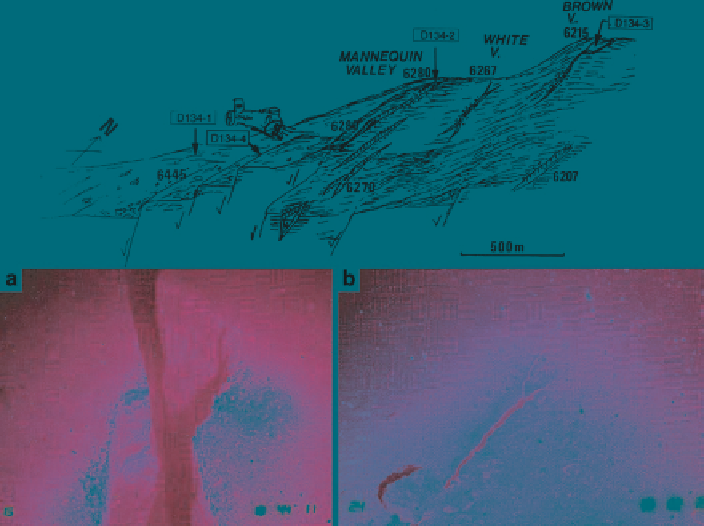Geoscience Reference
In-Depth Information
Fig. 3
Whale view sketch of the crack distribution on the shoulder of the normally faulted ocean-
ward slope at dive site 6K#67 (
top
), and views of cracks from the submersible window (
bottom
).
(
a
) a sharp crack in the seabed, which consists of diatomaceous mud; view looking southward;
(
b
) Y-shaped crack propagation, looking southeastward (From Ogawa 1994; A, dive 6K#67;
B, dive 6K#134)
Kanamori
1971
), which was caused by normal faulting due to bending of the down-
going Pacific slab (shown by x in Fig.
2
). Kanamori (
1971
) reported that this nor-
mal fault cuts almost the entire thickness of the Pacific plate.
The surface of the oceanward slope is composed of diatomaceous mud and
mudstone with occasional ash layers. The sediments are not well indurated, nor are
they deformed, except by local vein structures (Ogawa
1994
). No chemosynthetic
biocommunity is present. Repeated observations over 5 years have shown that
northward-flowing bottom currents rapidly fill the cracks at the rate of centimeters
per year (Hirano et al.
1998
).
3
Landward Slope Topography and Geology off Miyako
The landward slope toe of the northern Japan trench off Miyako is also character-
ized by steep slopes, with a maximum angle of 30°, as estimated from a map with
a 10-m contour interval (Fig.
2
), and an average angle of 15°. The deepest portion
attains a depth of 7,400 m. A steep cliff with a north-south trend at 6,500 m depth,

Search WWH ::

Custom Search